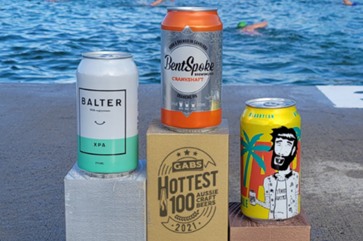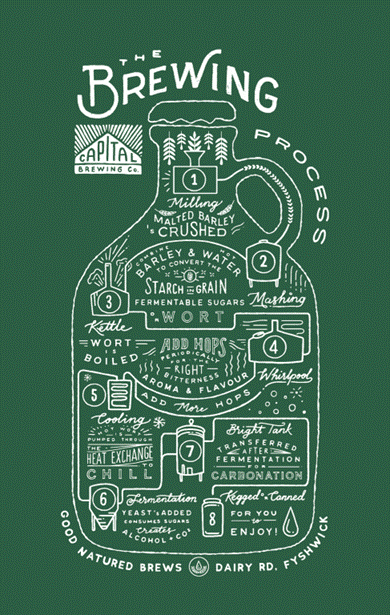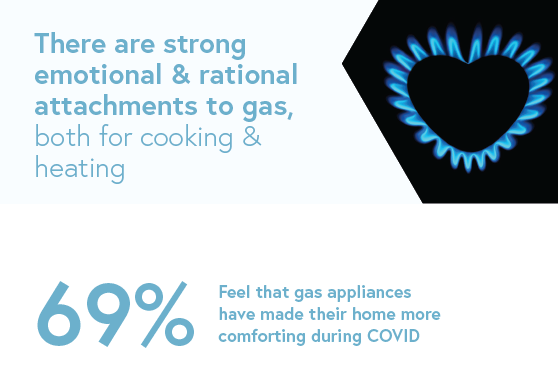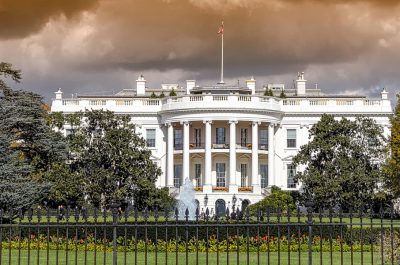When a city with no gas becomes a pub with no beer
Local councils in Melbourne are becoming increasingly vocal calling for bans on new gas connections[i]. Similarly, the ACT branch of the Property Council of Australia is also promoting a city without gas and encouraging electrification of gas services. Most of those actions are driven by sustainability committees within councils but are they representative of what communities really want or are they out of touch? Have they considered what would happen to local industry if gas was switched off?
No gas, no beer!
The ACT has some of the country’s best breweries. In last year’s GABS (That’s Great Australasian Beer Spectapular for the uninitiated) hottest 100 craft beers[ii], 12 of Canberra’s local brews were included, with five in the top twenty and the number one spot taken out by a Canberra beer for the second year in a row. Victoria also did quite well in the GABS 100.
Figure 1: The GABS 100, top 3 beers (Source: https://gabshottest100.com/au/)
Gas is used in many areas of beer making, especially for providing steam and hot water during the beer making process. There are eight steps to making beer[iii]. Hot water is used during the mash process, which is where all the goodies from the grains are extracted into water. This process takes around two hours at temperatures between 38 and 80 degrees C (depending on grain used). The resulting liquor – or wort as the brewers call it – is then stabilised by boiling for 2 hours. It is also at this stage where hops are added to the wort. The heating and boiling of this process can use either steam (from a gas-fired boiler) or gas directly.
All this happens before the fermentation process, where the sugars are converted to alcohol.
Figure 2: The Brewing Process (Source: Capital Brewing Company, Canberra)
While hot water can be produced by electricity, the volumes needed for a brewery make a gas boiler a far more efficient solution. And spare a thought for the viability of those small industries if they’re required to carry the cost of electrifying all their existing gas kit.
Gas is also used to keep customers warm, especially on those cold winter days and evenings when people are catching up with friends in local beer gardens, kept warm under gas heaters. Because that is what people enjoy, the warmth of a flame. The meals provided at pubs and restaurants are also reliant on gas. Nothing quite like a flame grilled steak with pepper sauce to keep you warm. You definitely wouldn’t get that same flavour or character without a gas flame.
Many breweries are being environmentally conscious by installing rooftop PV on their premises[iv] and/or offsetting[v] their emissions. Those are really positive steps that allow businesses to minimise their electricity bills as well as reduce emissions from their operations. But gas is still needed. Presently, offsetting those emissions is the best way of producing climate-neutral beer. But those emission offsets won’t be needed when renewable gases are introduced to gas networks in the coming years.
What is needed however, is an ongoing gas connection to produce beer, provide warmth and great food – and ensure a delivery mechanism for renewable gas in the future.
Customers prefer gas
Customers continue to favour gas as a fuel of choice. A recent survey showed that 69 per cent of customers felt that their gas appliances made their home more comfortable during the COVID lock down periods and subsequent working from home.
Figure 3: Natural Gas – Voice of the customer (Source Energy Networks Australia)
There was also a lot of support to utilise renewable gas to help decarbonise our economy. Local governments should take note. Customers want to keep using gas and are keen to support the development of renewable gas options. This not only ensures customers continue to have choice, it means we retain diversity of energy supply, supporting our electricity system through winter peaks and renewable power lulls (otherwise known as dunkelflaute).
A better way for councils to provide services to their community.
The role of local councils[vi] is to: “to provide services that meet the needs of their local community…” Some of these services include:
- Rubbish and recycling
- Maintenance of local parks and sports grounds
- Pet registration
- Planning approvals.
Pushing for a gas ban that will have a huge impact on local industry is clearly not meeting the needs of the community. Instead, local councils could probably better serve their constituents by supporting sustainable development of local industry – for example by using municipal waste and/or waste from parks maintenance to support the development of renewable gas.
What would Slim Dusty say
The famous country song highlights what life could be like of pubs had no beer:
But there’s-a nothing so lonesome, morbid or drear
Than to stand in the bar of a pub with no beer
Perhaps local councils should consider whether its actions will result in a new community song:
But there’s-a nothing so lonesome, morbid or drear
Than to stand in the middle of a city with no gas
Until then, Cheers!
[i] https://www.theage.com.au/national/victoria/not-cooking-with-gas-councils-want-to-ban-gas-connections-in-new-developments-20220531-p5apts.html
[ii] https://gabshottest100.com/auresults/2021/
[iii] https://capitalbrewing.co/
[iv] https://www.bentspokebrewing.com.au/blogs/blog/solar-powered-beer
[v] https://www.act.gov.au/our-canberra/latest-news/2022/april/capital-brewing-goes-carbon-neutral
[vi] https://www.viccouncils.asn.au/what-councils-do/council-responsibilities




